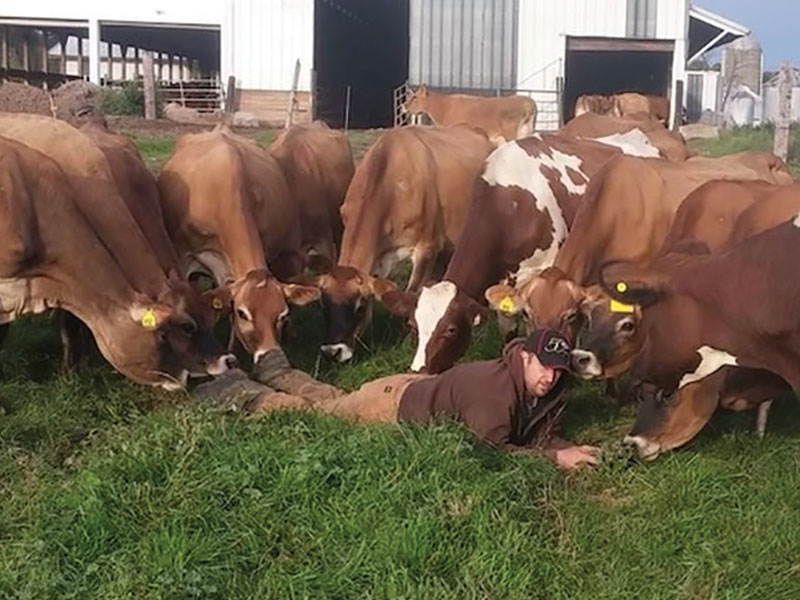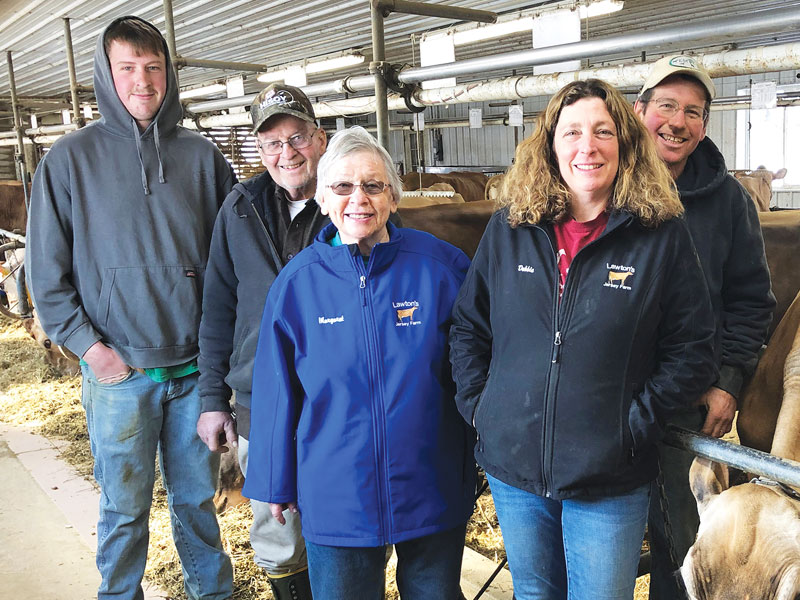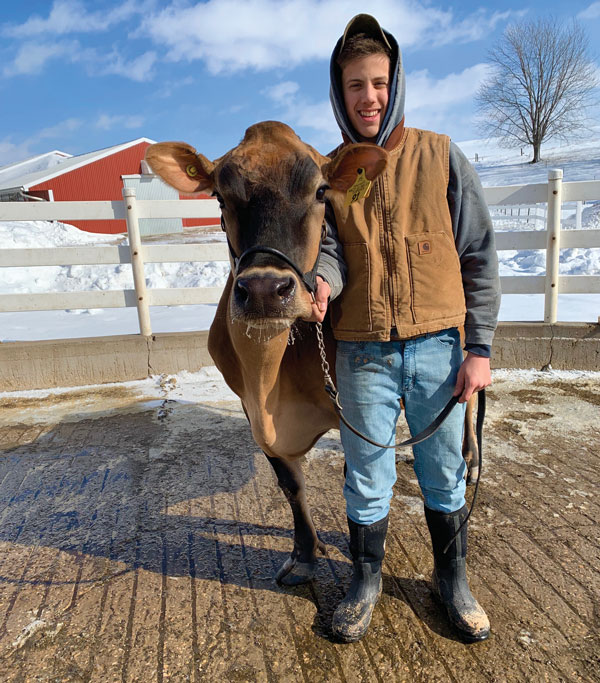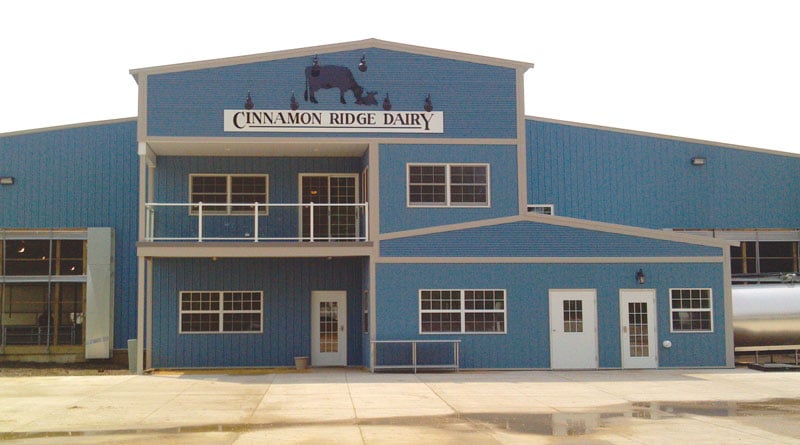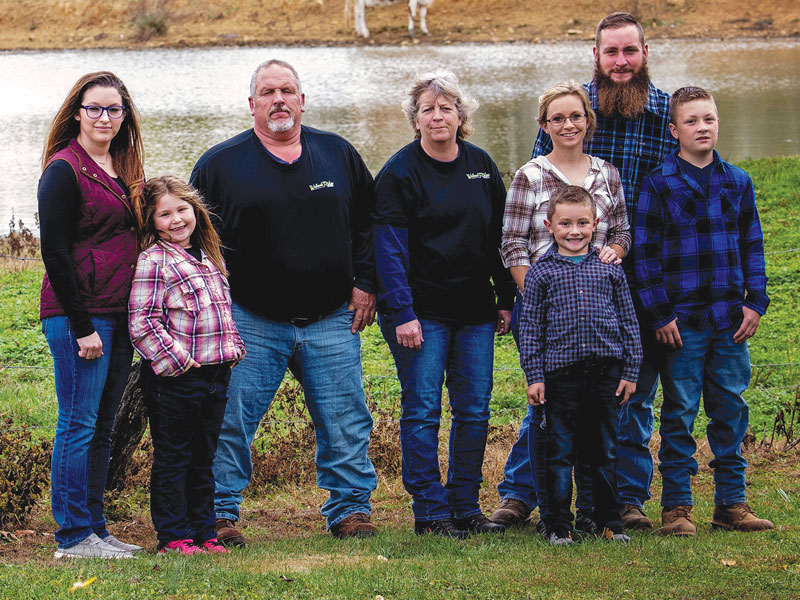Jersey Production Now a Record High
The levels of milk, fat and protein produced by Registered Jerseys is at a record high and Jersey milk is as nutrient dense as ever. In its annual production summary, the American Jersey Cattle Association (AJCA) reports the official breed average is now 20,205 lbs. milk, 980 lbs. fat and 750 lbs. protein on a standardized mature equivalent (m.e.) basis. On a Cheddar cheese yield basis, average production is a record high 2,547 lbs. The number of records included in the breed average is 93,082.
On an actual basis, production per cow is a record high 17,855 lbs. milk, 869 lbs. fat and 661 lbs. protein. Cheese yield stands at 2,248 lbs.
Though the number of lactations in the 2020 breed average is down 7,822 from the previous year, the Jersey breed continues to grow relative to other breeds. The most recent statistics (January 2020) indicate Jersey cows represent 8.72% of the national dairy herd, up from 7.73% the previous year. Sales of Jersey bull semen continue to rise as well, now accounting for 15.35% of domestic semen sales.
Versus 2019, the measures for standardized production per cow for 2020 increased by 196 lbs. milk, 11 lbs. fat, 8 lbs. protein and 27 lbs. cheese yield. Actual production is up 327 lbs. milk, 15 lbs. fat, 12 lbs. protein and 41 lbs. cheese yield.
When expressed as energy corrected milk, production per Registered Jersey cow was 21,621 lbs., representing an increase of 384 lbs. versus 2019.
This is especially good news because Jersey producers are working to breed and manage their cow in a manner that maintains competitive edge for efficiency and leaves a smaller carbon footprint in the production of cheese. The bottom line is that milk yield has increased along with fat and protein―a balancing act that is often difficult to achieve. The increases in components also mean milk processors can be more efficient, making more product, like cheese, per hundredweight of Jersey milk.
Based on statistics of the previous 10 years, the breed lactation average is projected to reach 21,024 lbs. milk, 1,030 lbs. fat and 790 lbs. protein by 2025, with a cheese yield equivalent of 2,683 lbs. On an actual basis, production is projected to reach 18,530 lbs. milk, 912 lbs. fat and 694 lbs. protein, with a cheese yield equivalent of 2,363 lbs. Cheese makers are projected to be able to make 12.75 lbs. of product per hundredweight of Jersey milk by 2025.
-

The second-high herd for fat and protein (actual and m.e.) is Den-Kel Jerseys LLC of Byron, N.Y. The herd is owned by Kip and Katie Keller and their young boys, Max and Henry. -

Lawton Jerseys ranks second in the nation for actual milk production. The 67-cow Registered Jersey herd is owned and operated by the Lawtons—Ryan, Merle, Margaret, Debbie and Tim—in Newark Valley, N.Y. -

Joseph and Debra Brant own the herd ranked second in the country for m.e. milk production. Here, grandson Joseph Frommelt poses with a member of the milking string, Jo-De-Bran Topeca Maxine, Excellent-91%. -

Cinnamon Ridge Dairy, owned and operated by the Maxwell family of Donahue, Iowa, is the nation’s top herd for milk and protein production on both an actual and m.e. basis for the second consecutive year. The Maxwells also make artisan cheese at the farm and run a thriving agritourism business. Cows are milked by Lely robots. -

Danny and Pam Moser, center, own the nation’s leading herd for fat production (actual and m.e.). Pam also makes butter and cheese from the herd at Moo Cow Creamery with daughter Amber, second right. Also pictured are daughter, Katie, with her daughter, Hayleigh, and Amber’s husband, Travis Beachley, and their sons, Jacob and Daniel.
Top Herds
In the annual production analysis, the AJCA also identifies the nation’s leading herds for standardized and actual production. For the second consecutive year, the 197-cow herd at Cinnamon Ridge Dairy Farm, Donahue, Iowa, is the leader for milk, protein, and cheese yield on both an m.e. and actual basis. The 2020 lactation average is 26,503 lbs. milk, 1,250 lbs., 995 lbs. protein and 3,338 lbs. cheese yield. The actual average is 25,077 lbs. milk, 1,173 lbs. fat, 931 lbs. protein, and 3,125 lbs. cheese yield.
The nation’s top fat producer for both standardized and actual production is the 19-cow herd owned by Pam and Danny Moser of Middletown, Md. Walnut Ridge Farm has a 2020 lactation average of 22,732 lbs. milk, 1,376 lbs. fat and 822 lbs. protein. The actual average is 20,543 lbs. milk, 1,258 lbs. fat and 746 lbs. protein.
Joseph and Debra Brant of Cuba City, Wis., rank second for milk on a standardized basis. Their 21-cow herd has a 2020 lactation average of 25,638 lbs. milk, 1,229 lbs. fat and 931 lbs. protein. Lawton Jerseys, Newark Valley, N.Y., owned by Merle Lawton and his family, ranks second for milk on an actual basis with a herd average of 22,873 lbs. milk, 1,129 lbs. fat and 846 lbs. protein on 67 cows.
Den-Kel Jerseys LLC, Byron, N.Y., ranks second in the nation for fat and protein on an m.e. and actual basis. The 43-cow herd has a 2020 lactation average of 24,847 lbs. milk, 1,351 lbs. fat and 953 lbs. protein. The actual herd average is for lactation average of 22,796 lbs. milk, 1,241 lbs. fat and 873 lbs. protein.
In the annual production summary, lactation averages for individual herds are calculated on a standardized 305-day, twice daily milking, m.e. basis. Production is included for lactations meeting the registry minimum of Generation Count 4 and higher. Records included in the average have data collection ratings of 85 or higher. Herds identified in the top rankings have a minimum of 10 cows.
Complete coverage of the annual production summary can be found in the March 2021 issue of the Jersey Journal. Or, the article can be viewed as a PDF file here.


